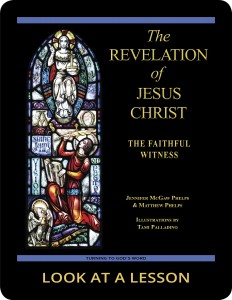share your master’s joy
 In the Gospel According to Matthew 25:14–30 (NABRE), Jesus tells a parable about servants who are given charge of a portion of their master’s wealth during his absence. Two invest prudently while one doesn’t. To the two with whom the master is satisfied, he promises increased responsibility and invites them to “share their master’s joy.”
In the Gospel According to Matthew 25:14–30 (NABRE), Jesus tells a parable about servants who are given charge of a portion of their master’s wealth during his absence. Two invest prudently while one doesn’t. To the two with whom the master is satisfied, he promises increased responsibility and invites them to “share their master’s joy.”
It’s worth considering this reward in a bit more detail. A literal translation of the Greek text here has something like “enter into your master’s joy.” While the rendition of “share your master’s joy” does a fine job capturing the spirit of what’s happening, the image portrayed by the literal rendition is interesting. The master’s joy is depicted as a place that has been cut off from his servants. They are then only allowed entry when they prove themselves. It also depicts this joy of the master as yet another of his possessions to be shared with his servants at his discretion. They don’t seem to have their own joy, and they’re not given joy of their own as a reward but rather a share in their master’s joy.
This arrangement is odd within the context of this parable but perhaps not so odd when considering what the parable is attempting to convey. As servants of God, the joy we possess truly is not our own, and when we realize that instead we’re granted a share of God’s joy when we are good servants, that changes our focus and effort. We’re working not to make ourselves happy but to please God, and in the process, we will find joy surpassing any we could know by our own efforts.
you also may like our study of the book of Revelation
 The Revelation of Jesus Christ: The Faithful Witness, a 23-lesson Catholic Bible study with an imprimatur, examines ways in which our traditional Christian view of heaven is built on Hebrew apocalyptic visions recorded in the Old Testament. This recently revised study includes maps and additional commentary and takes a close look at the role of the prophets in present-day Christianity. Illustrations by Tami Palladino depict the often-misunderstood images in the book of Revelation. Click on the book’s cover to view a sample lesson.
The Revelation of Jesus Christ: The Faithful Witness, a 23-lesson Catholic Bible study with an imprimatur, examines ways in which our traditional Christian view of heaven is built on Hebrew apocalyptic visions recorded in the Old Testament. This recently revised study includes maps and additional commentary and takes a close look at the role of the prophets in present-day Christianity. Illustrations by Tami Palladino depict the often-misunderstood images in the book of Revelation. Click on the book’s cover to view a sample lesson.
 Click on the picture of the statue of Moses with horns (above) to learn more about Lost in Translation. A new entry is archived each Monday. Contact us to receive Lost in Translation by email every week. You may use any of the contact links on our website to ask Matthew a question.
Click on the picture of the statue of Moses with horns (above) to learn more about Lost in Translation. A new entry is archived each Monday. Contact us to receive Lost in Translation by email every week. You may use any of the contact links on our website to ask Matthew a question.
